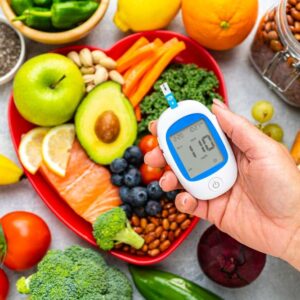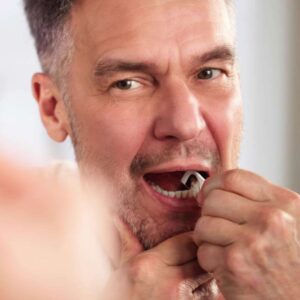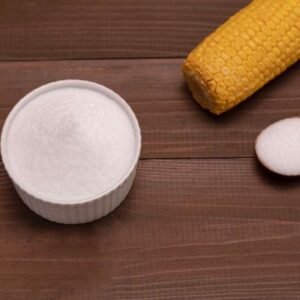
Mosquito Season: Why Bug Spray Can Melt Plastic
Dear Living Well Daily Reader,
2016 is the year of the mosquito.
With over 2,500 confirmed cases in the U.S., threats of Zika have brought mosquito protection to the forefront for anyone living in or traveling to areas with mosquitos.
And while today, Labor Day, usually marks the end of summer, there’s still about a month of high-temperature days and mosquito-filled nights ahead. This means your risk of catching a mosquito-borne illness is far from over.
That’s we’ve decided to share with you, once again, important information on how to protect yourself from dangerous disease-spreading bugs without risking your health.
There are lots of options out there for mosquito protection, but it’s important to find safe, adequate protection that won’t ruin your health.
Read on to discover more…
![]() Mosquito Season: Why Bug Spray Can Melt Plastic
Mosquito Season: Why Bug Spray Can Melt Plastic
As the cases of Zika virus pile up, so do bug repellant sales.
But before you get carried away in the outdoor section…
You should know that a popular ingredient in bug spray can cause some serious health issues, including neurological damage when used at high concentrations.
Yet you still need to protect yourself and your family from the imminent threat of mosquito-borne disease.
So what can you do?
Fortunately, there are a few ways to make this toxic repellent, DEET, a little safer.
![]() Pass the Paint Thinner?
Pass the Paint Thinner?
My first encounter with DEET was alarming.
One year when I was away at summer camp, I saw a fellow camper melt a plastic cup with a can of aerosol bug spray. While it was disturbing, the 11-year-old version of me couldn’t help but be intrigued.
Throughout the camp session, some other curious campers and I figured out that not only could this bug spray melt plastic, but it could also strip paint and even remove nail polish.
When I went home and told my mom about it — she immediately threw it out and chalked it up to being a fluke.
But it was no fluke; it was DEET.
As it turns out, DEET isn’t just an insect repellent. It’s a powerful chemical in other ways.
DEET is a member is of the toluene family. These chemicals are solvents, which explains why the DEET-based bug spray was able to remove paint and melt plastic.
Regular DEET use is linked to side effects including rashes, skin irritation, numbness and burning in the lips, nausea, headaches, dizziness, and trouble concentrating.
Studies using DEET have also raised concerns about neurological damage and disrupted gene expression. In high doses, DEET can induce neurological symptoms like seizures, tremors, and slurred speech.
While all of these health consequences are alarming, they are associated with high concentrations and long durations of exposure.
However, lowering the concentration of DEET in your bug spray is an easy way to reduce these dangerous exposures. DEET is available in various concentrations, from 100 percent all the way down to 5 percent.
The concentration level doesn’t affect the spray’s ability to repel insects. Instead, higher concentration provides longer-lasting protection.
This means choosing a lower dose of DEET won’t make you more susceptible to bites, unless you forget to reapply it. Plus, this instantly lowers your exposure to this strong solvent. Be sure to read the label for duration information.
The CDC suggests using products with a concentration of 20–50 percent to repel disease-carrying vectors. This percentage should provide all-day protection. But if you’re going out for just a few hours, a lower concentration like 10 percent should do the job.
![]() Biochemical Protection
Biochemical Protection
There is another other option.
The CDC has approved the use of lemon eucalyptus oil as an insect repellant. However, the approved form is quite different from the unprocessed form.
The type of lemon eucalyptus approved by the CDC is a processed oil extract. The oil extract is refined to intensify its active ingredient, para-menthane-3,8-diol, or PMD. Processing increases the PMD concentration from 1 percent to as high as 65 percent.
Heavy refining doesn’t exactly make PMD a “natural” product, but the EPA defines it as a biochemical pesticide. This means it’s a naturally occurring ingredient that controls pests via nontoxic mechanisms.
Repellants with 20–26 percent PMD concentrations are shown to be just as effective against both mosquitoes and ticks as 15–20 percent DEET repellants.
Although PMD repellents aren’t exactly “natural,” they can’t melt plastic or strip the paint off a car, making them the seemingly safer option.
The increased risk of Zika and other vector-borne diseases this year makes it important to ensure you are properly protected. Wearing long sleeves and pants is an effective way to increase your chances of dodging pesky bites, because clothing adds one more layer of protection between you and the pests.
But if you are going into an area infested with disease-carrying insects, you’ll need to use bug spray as well. Make sure your bug repellent is appropriate for the situation. Using DEET or PMD at the recommended level is the best option for areas with large mosquito populations.
Citronella and other essential oils are fine options for adding an extra layer of protection but aren’t powerful enough to shield you from bites in highly infested areas.
Live well,

Natalie Moore
Managing editor, Living Well Daily
Sources
[1] Is it true that the DEET used in most mosquito repellents is toxic?
[2] EWG’S GUIDE TO BUG REPELLENTS IN THE AGE OF ZIKA: REPELLENT CHEMICALS
[3] Protection against Mosquitoes, Ticks, & Other Arthropods
[4] Which repellent works best?
Written By Natalie Moore
Natalie Moore is a dedicated health researcher with a passion for finding healthy, natural, and science-based solutions. After a decade of direct healthcare experience in western and natural medicine, she was involved in public health research before joining Living Well Daily.
View More Free Articles
This Sleep Mistake Is Doubling Your Disease Risk
Think your inconsistent bedtime is just a harmless habit? Think again. New research reveals that going to bed at different times each night isn’t just making you tired—it could be dramatically increasing your risk of serious diseases. But the key to making sure poor sleep doesn’t derail your health goals likely isn’t what you think…....
Stop Obsessing Over Diet Trends
Can we stop with the endless diet debates already? Every other week there’s a new headline shouting about which diet is best for weight loss, heart health, or diabetes. Paleo, keto, low-carb, high-protein… it’s exhausting. And now, a new meta-analysis is out comparing the Mediterranean diet, the DASH diet, and something called AHEI (that’s “Alternative...
A New Reason to Ditch Processed Junk
If you’ve ever walked the inside aisles of your local grocery store and thought, “This is all just junk,” your instincts were spot on. A new study published in the journal Thorax just added another red flag to the list of dangers linked to ultra-processed food—a 41 percent higher risk of lung cancer. That’s right....
When Being Winded on Stairs Is Serious (And When It Isn’t)
I had an athlete visit me recently because he experienced shortness of breath while climbing stairs. He is in great shape, so he was worried about what it might mean. “Doc,” he said, “I run five miles three times a week. Why am I huffing and puffing after two flights of stairs?” His concern is...
Study EXPOSES Hidden Danger Lurking in Your Car
We think of our homes and cars as safe havens. But according to a startling new study, they may be flooding your lungs with microscopic plastic particles—every single day. Researchers in France recently found that adults inhale an average of 68,000 microplastic particles daily from indoor air alone. To put that in perspective, that’s about...
Mailbag: Is Modern Food Making You Snore?
“What can cause snoring, and is there a way to correct this issue?” —Seeking Silence Hi Seeking, Snoring happens when the soft tissues in your throat relax and vibrate as air passes through during sleep. While several factors can cause snoring—from sleep position to nasal congestion—I want to share one trigger that might surprise you....
Simple Food Swap SLASHES Dementia Risk 28%
Let’s be honest… who would jump at the chance to cut their dementia risk by 28 percent. And no, you don’t need to run marathons, survive on broccoli, or learn to play the zither (whatever that is) to make it happen. All it takes is one easy swap—something that’s probably already in your refrigerator. Researchers...
This SMART Floss Exposes Hidden Health Danger
Scientists have created dental floss that doesn’t just clean between your teeth—it also tracks your stress while you’re flossing. Now, I know what you’re thinking… “Great—now even flossing is going to stress me out by telling me how stressed I am.” But this fascinating new tool from Tufts University could be a game-changer for understanding...
Is This "Safe" Sweetener Damaging Your Brain?
The headlines are alarming… “Popular Sugar Substitute Linked to Brain Cell Damage” and “Erythritol Could Damage Critical Brain Barrier” are just two of the dozens I’ve spotted recently. But before you toss every sugar-free product in your pantry, let’s take a closer look at what this study actually shows—and what it doesn’t. The latest research...
This Summer Threat Could SPIKE Your Blood Sugar
Picture this… It’s another scorching hot summer day. You crank up the air conditioning while watching the weather forecast, which predicts yet another “record-breaking” heat wave. It’s starting to feel like just another miserably uncomfortable summer. But what you might not realize is that—if you have diabetes—those rising temps could do far more damage to...









